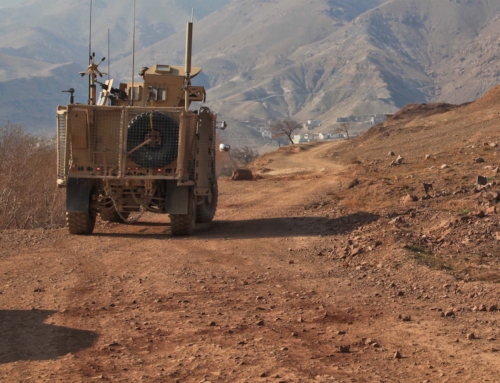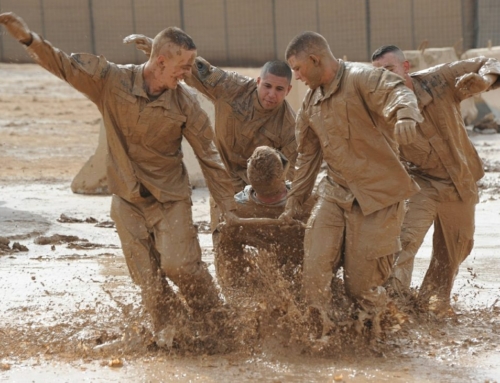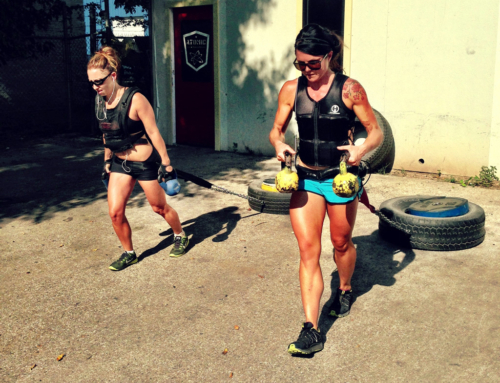Have you ever noticed that your right quad is stronger than your left?
Are you more flexible on one side than you are on the other?
Does it matter to you?
Balance and Symmetry
Most people intuitively know that one side of the body being stronger is not the ideal. But why is that? What benefits exist, other than pure aesthetics?
The “beach body” look aside, there are very real benefits to symmetrical muscles and equal flexibility in both hip sockets or both shoulders. In this article, we will explore how and why you should strive for balance in strength and flexibility in your body.
Imbalance
I know someone that has a terrible time with the muscles between her left shoulder and her neck, near the spine. The muscles get so tight that they put her in a good deal of pain. The discomfort is aggravated by stress and eased by ibuprofen, massage, and heating pads. Not ideal, but it is how she’s coped.
To see if I could help her with this, I asked her to lie down on the floor, reach her hands over her head and with straight arms try to touch her hands to the floor. We’re talking about functional flexibility here, not circus flexibility.
Just as I had suspected, her right arm immediately laid flat on the floor, but the left side was another story. It took nearly five minutes of conscious relaxation and stretching to get the left arm three inches from the ground. It was not a pleasant experience.
The imbalance in her shoulder flexibility is obvious. This almost always corresponds to an imbalance in functional strength as well.
It’s All Connected
Have you ever traced a muscle from your neck all the way down your back with your fingertips? Open this link in another window so you can read along and study the picture. Look closely at the muscles in this picture. Follow the muscles from beginning to end. Notice how the muscles on the left side extend all the way from the base of the skull to the top of the shoulder.
(Please note that the picture shows the outer layer of muscle the left side and the underlying layer of muscles on the right side).Now just imagine how smaller, weaker muscles on only one side of your body could affect your spin/neck. Imagine how a single area of inflexibility or a lack of strength can affect the whole picture.
The Window Washer
Imagine the way old-time high rise window washers worked. Two men stand in a little metal cage with ropes on both sides of the cage. The ropes are looped through pulleys, 30 stories up. Two men of similar size stand on either side of the window washer’s cage and they each pull one of the ropes to move up the building.
If one of them is stronger than the other, this is going to be a bumpy trip. The one on the left might pull harder, faster, and more rope than the one on the right. The left side of the cage will go up faster and farther than the right side, causing imbalance, and an unstable condition.
What does this have to do with you? Let’s apply that analogy to your shoulders. If your right shoulder is stronger, more flexible than your left, the muscles in your back will be off balance. The right shoulder will be pulling stronger and faster than the left shoulder, and your poor spine (the window washer cage) will be off-balance.
Our bodies are a mass of interrelated tissue, which for the most part, can be divided right down the middle (the spine). The skeletal and muscular aspects of the right side should be a mirror image of the left side. If you divide yourself front to back you will see that while the muscles are not the same, they are “equalizers” that have to work together to produce movement. The more you equalize your strength and flexibility – front to back, left to right, top to bottom – the more “in balance” you will be. The more you will minimize the impact on your spine, your joints, and your overall musculoskeletal body.
What can you do to balance yourself out?
Start by introducing functional training and stretching into your daily routine. A program like Brass Ring Basic Training is perfect for the individual whose musculoskeletal balance is all out of whack. With the development of competency in technically sound functional movement, the body will begin to build balance into your strength and flexibility.
Beware of isolated movements (like bicep curls) and training that is dominated by a limited range of movement (like running). These are two of the main culprits of muscular tightness. In a healthy program, strength and flexibility are developed together. Full range of motion in functional exercises, as well as a balance of various stretching routines will result in the healthiest adaptations of your body.
Listen to Your Body
Your body speaks to you in many different ways. One of the most obvious is through the language of “discomfort”.
Pay attention as you go about your stretching and workouts. Notice what seems to be tight on one side and not the other. Notice your limitations in movement, like not going deep enough in the squat or inability to completely open the shoulder in the overhead press.
Conscious Stretching
As the name implies, conscious stretching requires that you are able to fully focus. In a quiet room, stretch a muscle until you feel it. If there is sharp pain, stop and back off until you don’t feel the pain, but not so far that you feel nothing. Stretch to the point where you “feel the stretch”.
Once you feel the stretch, stop for a moment. Hold it. Now pay attention. Which muscles are affected? Feel the shape of those muscles (not with your fingers, but with your mind). Feel the dimensions. Feel the energy in the muscles. Is it a solid energy or is it pulsing? Can you feel where the muscles connect? If you are stretching your Trapezius muscle (from the anatomical drawing), do you feel the connections in your shoulder socket or neck? Do you feel anything in your back?
Hold the stretch until you relax a little.
Next, stretch the other side of your body, with the same position. How are the muscles in this stretch? Are they stronger or weaker? More or less flexible? If this side is weaker, can you imagine why? Is one side of your body stronger than the other? Is one side injured?
The more you experiment with this form of conscious stretching, and the more you learn about the human body by looking at anatomy pictures, the more you will begin to understand where your personal strengths and weaknesses lie.
The Next Step
If you’re not doing it already, begin an exercise program where you can learn the basics of functional movement and train at your skill level. Build competency by using the principle of crawl, walk, run. Work with someone who is able to help ramp you up in a safe and effective way.
Start building stretching into your daily life. It’s something that is so easy to do, almost anywhere. We will be adding a stretching page to this website soon; but for now, check out this website for some very basic stretches.
Pay attention to the signals and messages your body is sending. Balance function and flexibility with determined patience to achieve your best you.
Some anatomy links for further study:
Abdomen
Back & Neck
Pecs, Shoulder, & Upper Arm
Underlying Muscles of the Shoulder
Thigh & Pelvis
Leg










Ну а что еще писать шоб не потерли? 🙂
Good point Victor.
Would it make sense to train the muscles individualy to get them equally strong. For example, one arm kettlebell swings, one are SDHP, etc…
Good call John. Isolating movements to one side or another, as in the cases you described, is a good way to develop balance. What is also important, is to perform full body functional movements that require the whole body to work together.
The most important thing is that the movement that you are performing is functional, in other words, it translates to the way the body is designed to optimally perform.
Keep training!
Coach